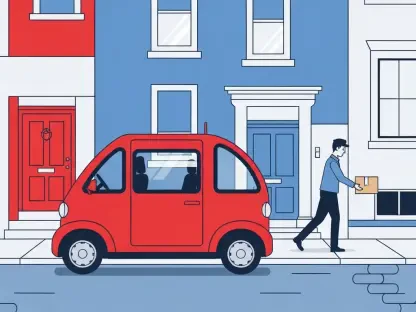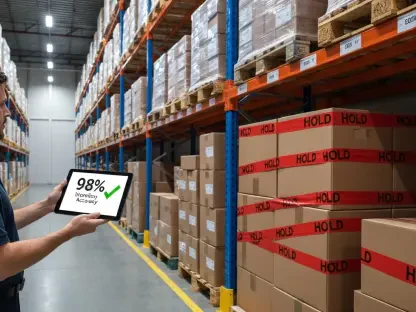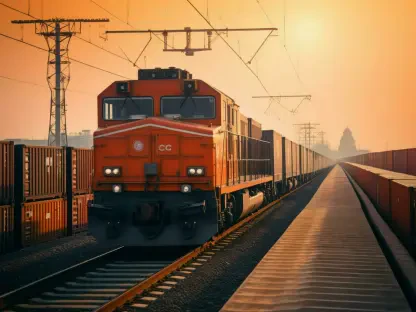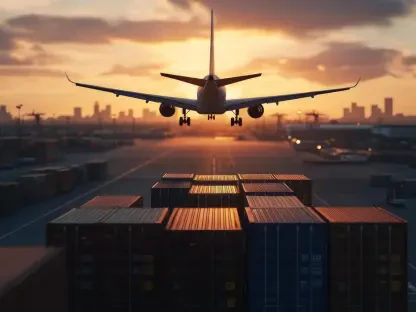Overview of the EU Van Sector and Its Importance
Imagine a sprawling network of vans crisscrossing the European Union, delivering goods across borders with precision and speed, yet on the brink of a seismic regulatory shift that could redefine their operations. The light commercial vehicle (LCV) sector, particularly vans weighing between 2.5 and 3.5 tonnes used in cross-border freight transport, forms a critical backbone of EU logistics. These vehicles are indispensable for last-mile delivery and small-scale international shipping, supporting countless businesses and supply chains.
This sector’s economic significance cannot be overstated, with an estimated three million vehicles directly involved in these operations. Their role ensures the seamless flow of goods, from perishable items to industrial components, sustaining both local economies and broader trade networks. The sheer volume of these vans highlights their importance, as they often bridge gaps that larger trucks cannot fill due to size or route constraints.
Key players in this arena include small operators, individual drivers, and national transport associations, all navigating a landscape shaped by existing technologies and traditional practices. Many rely on basic fleet management tools, while others have yet to adopt digital solutions that could ease compliance with upcoming rules. The interplay of these stakeholders underscores the sector’s diversity and the challenges of aligning such a fragmented industry toward a common goal.
Current Trends and Market Dynamics in the LCV Sector
Emerging Challenges and Opportunities
The LCV sector is at a pivotal moment, grappling with a wave of regulatory compliance pressures that threaten to reshape daily operations. With new EU rules looming on the horizon, many operators face the risk of significant disruptions due to unfamiliarity with complex requirements. This push for stricter oversight, while aimed at improving safety and fairness, places a heavy burden on an industry unaccustomed to such stringent demands.
A notable challenge lies in the widespread lack of awareness among van drivers and operators about the specifics of these impending changes. Without proper education, the sector risks operational hiccups, from unplanned downtime to penalties for non-compliance. This gap in knowledge could hinder the efficiency that defines cross-border transport, creating bottlenecks in an already competitive market.
Yet, amidst these challenges, opportunities for growth and improvement emerge. Training programs tailored to the unique needs of van drivers, alongside the adoption of technologies like smart tachographs, offer pathways to readiness. Collaboration among stakeholders, including associations and technology providers, could foster a proactive culture, turning potential obstacles into stepping stones for a more resilient industry.
Market Scale and Preparedness Outlook
The scale of the upcoming regulatory impact is staggering, with up to three million vehicles and countless operators across the EU set to be affected by the changes starting in mid-2026. This vast number reflects not just the size of the sector but also the enormity of the task ahead in ensuring compliance. Small operators, often lacking the resources of larger firms, face a particularly steep climb in aligning with these mandates.
Current preparedness levels within the sector remain alarmingly low, echoing past struggles seen during tachograph rollouts in the truck industry. Many van drivers, accustomed to operating under less rigid rules, are ill-equipped to handle the detailed record-keeping and rest time regulations that will soon apply. Drawing from historical parallels, delays in preparation could lead to widespread non-compliance if action is not taken swiftly.
Looking ahead, early intervention stands as a critical factor in mitigating risks, with projections suggesting that without immediate steps, compliance rates could remain below acceptable thresholds by the deadline. Industry experts advocate for a ramp-up in awareness campaigns over the next year to boost readiness. Proactive measures now could prevent a cascade of fines and logistical setbacks, preserving the sector’s operational flow.
Key Challenges Facing the EU Van Sector
The 2026 regulatory changes present a formidable set of hurdles for the EU van sector, chief among them being the unfamiliarity with driving and rest time rules that have long governed heavier vehicles. These rules, alongside driver posting requirements and minimum remuneration standards, introduce a level of complexity that many van operators have never encountered. This lack of prior exposure threatens to disrupt workflows and strain resources.
Logistical barriers further compound the issue, with potential shortages of second-generation smart tachographs (G2V2) looming large. Certified workshops, already stretched thin in some regions, may struggle to meet demand, leading to long wait times for installations. Such delays could leave many vehicles non-compliant on the day the rules take effect, exposing operators to significant penalties and operational standstills.
Addressing these obstacles requires a multifaceted approach, emphasizing education as a cornerstone of preparation. Infrastructure support, such as expanding access to certified installation centers, must accompany efforts to inform drivers and operators about their obligations. Timely action, supported by clear guidance from industry bodies, will be essential to navigate this transition without sacrificing the sector’s efficiency or incurring avoidable costs.
Navigating the 2026 Regulatory Landscape
Starting July 1, 2026, specific EU regulations will reshape the operational framework for LCVs engaged in cross-border transport, mandating adherence to driving and rest time rules, driver posting obligations, and the installation of smart tachographs. These requirements aim to standardize safety and labor conditions but introduce a steep learning curve for a sector previously exempt from such oversight. Compliance will no longer be optional but a legal necessity.
For van drivers, many of whom hold only B licenses and lack the training typical of heavy-duty truck operators, these rules represent a significant shift in daily practice. Unlike their counterparts in larger vehicles, van drivers may struggle with the nuances of recording hours or meeting posting requirements when working abroad. Operators, too, face the challenge of aligning business models with these new standards, often without prior experience in such regulatory environments.
The International Road Transport Union (IRU) plays a pivotal role in easing this transition, fostering dialogue with EU institutions and enforcement bodies to clarify expectations. Through practical guidance and direct engagement with stakeholders, IRU aims to demystify the regulations and provide actionable steps for compliance. This leadership ensures that the sector receives the support needed to adapt without undue disruption to cross-border logistics.
Future Outlook for the EU Van Sector
The long-term implications of the 2026 regulatory changes extend beyond immediate compliance, potentially transforming operational practices across the LCV sector. Driver training standards are likely to evolve, with a greater emphasis on formal education to align with the complexities of the new rules. Such shifts could redefine the skill set required for van operators, raising the bar for entry into the industry.
Innovation will also shape the sector’s trajectory, with advanced tachograph technology and digital compliance tools offering ways to streamline adherence to regulations. These solutions, if widely adopted, could reduce administrative burdens and enhance transparency in cross-border operations. Technology providers stand to play a crucial role in equipping the industry with the tools needed for a digital future.
External factors, including economic conditions and the harmonization of policies across EU member states, will further influence the sector’s adaptation. Disparities in enforcement or economic downturns could hinder uniform progress, while cohesive policy frameworks might accelerate compliance. The interplay of these elements will determine how effectively the van sector navigates its path forward, balancing growth with regulatory demands.
Conclusion: IRU’s Role in a Seamless Transition
Reflecting on the journey toward regulatory alignment, it becomes evident that the 2026 changes pose substantial challenges to the EU van sector, from operational adjustments to compliance complexities. The scale of impact, touching millions of vehicles and operators, underscores the urgency of preparation in avoiding penalties and disruptions.
Looking back, IRU’s proactive stance through workshops, training initiatives, and stakeholder partnerships stands out as a linchpin in navigating this shift. Moving forward, the focus should pivot to scaling these efforts, ensuring that resources reach even the smallest operators. Investing in accessible education and robust infrastructure emerges as key steps to safeguard jobs and maintain the efficiency of cross-border logistics.
Ultimately, the path ahead demands sustained collaboration between industry bodies, policymakers, and technology innovators to address lingering gaps in readiness. By prioritizing actionable solutions and fostering a culture of compliance, the sector can turn regulatory challenges into opportunities for long-term stability and growth.









